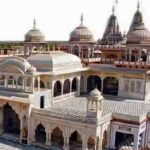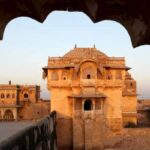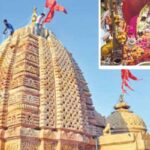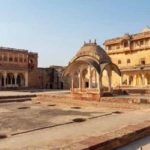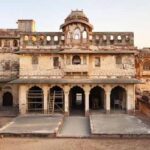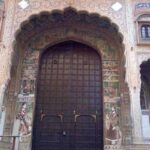Nagaur Travel Guide, a historic city in Rajasthan, India, is steeped in cultural richness and architectural heritage. One of the major highlights is the Nagaur Fort, also known as Ahhichatragarh Fort, renowned for its high walls and deep moats. This fort embodies a blend of Mughal and Rajput architecture, featuring beautiful palaces, intricate temples, and lush gardens within its premises.
Another captivating site is the Jain Glass Temple, a marvel of craftsmanship with its interiors adorned entirely in glass and intricate mirror work, showcasing the artistic ingenuity of the region. Additionally, the Tarkeen Dargah holds a significant religious and cultural importance, drawing devotees and tourists alike. It is especially lively during the annual Urs festival when the spirit of celebration fills the air.
For those intrigued by local traditions, the Nagaur Cattle Fair is a must-visit. One of the largest in India, it transforms the city into a bustling hub of trade, cultural performances, and folk music, offering a vivid glimpse into the rural lifestyle of Rajasthan Budget Tours.
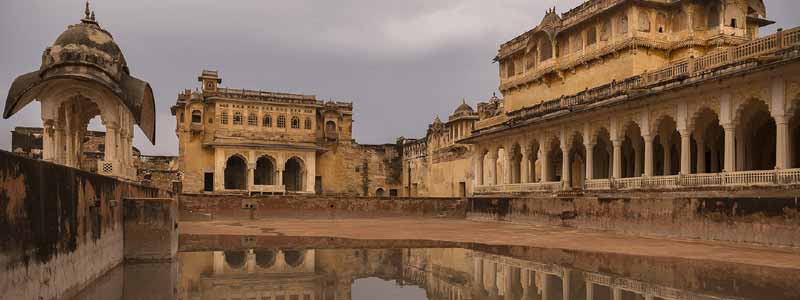
Best Places To Visit In Nagaur
Nagaur, nestled in the heart of Rajasthan, boasts a rich tapestry of history, culture, and architectural wonders. Here are some of the best places to visit in Nagaur:
Nagaur Fort:
Nagaur Fort, located in the heart of Nagaur city in Rajasthan, India, is a stunning example of historical architecture and Rajput-Mughal grandeur. This sprawling fort, also known as Ahhichatragarh, meaning the ‘Fort of the Hooded Cobra,’ dates back to the early 12th century and was initially constructed by the Nagavanshis. It later came under the control of the Ghurids, before passing into the hands of the Mughal Empire, and then eventually being controlled by the Rathore Rajputs of Marwar.
The fort is renowned for its high walls and deep moats, offering formidable protection from invaders throughout its history. Covering a vast area, it boasts a complex of palaces, baolis (step-wells), temples, and large courtyards, each adorned with exquisite Mughal and Rajput architectural styles. Intricate carvings and frescoes can be seen throughout these structures, reflecting the artistic heritage of the time.
One of the fort’s most notable features is its advanced water engineering system, designed to harvest rainwater through interconnected water channels, ensuring sustainability in the arid desert environment. The fort has been meticulously restored in recent years, receiving the UNESCO Asia-Pacific Award for Cultural Heritage Conservation in 2002.
Today, Nagaur Fort is not just a site of architectural and historical significance, but also a venue for the annual Nagaur Cattle Fair, one of the largest in Rajasthan, drawing visitors and traders from all over the region. This blend of history, culture, and tradition makes Nagaur Fort a fascinating destination for historians, architects, and tourists alike Nagaur Travel Guide.
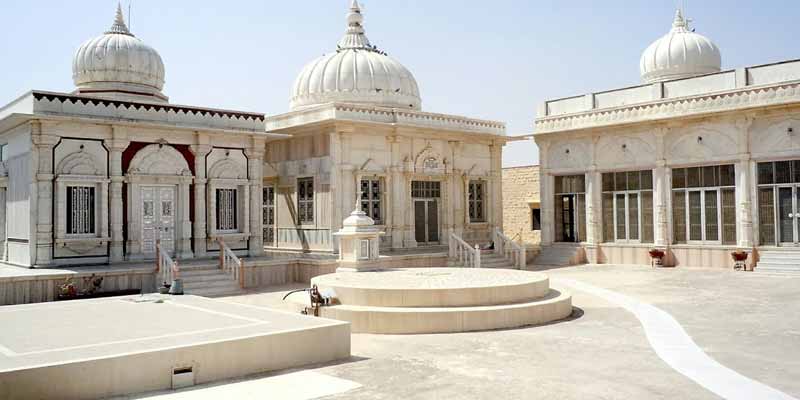
Saiji ka Tanka:
Saiji ka Tanka is a small village in the Nagaur district of Rajasthan, India. It falls under the jurisdiction of the Merta Tehsil, an area known for its historical and cultural significance. The village is characterized by its rural charm and traditional Rajasthani lifestyle, where agriculture plays a central role in the local economy. The villagers are primarily engaged in farming, with crops such as millet, wheat, and mustard being predominant, Nagaur Travel Guide.
Nagaur, the district in which Saiji ka Tanka is located, is famous for its large cattle fair, the Nagaur Cattle Fair, which attracts visitors and traders from all over Rajasthan and beyond. While Saiji ka Tanka is a quieter spot compared to the bustling scenes of the fair, the cultural richness of the region influences the village as well. Traditions in music, dance, and art are cherished and preserved by the villagers, adding a vibrant layer to their daily life.
The community in Saiji ka Tanka is close-knit, with families often participating in communal activities and festivals. These events are not only a showcase of the rich cultural heritage but also an important means of social bonding among residents. The architecture in the village typically features traditional Rajasthani elements, with many homes built using local materials that reflect the indigenous aesthetic and practical responses to the arid climate of the region.
In conclusion, Saiji ka Tanka is a quintessential example of a Rajasthani village, where the rhythms of rural life continue to be guided by the seasonal cycles and cultural practices that have been handed down through generations Nagaur Travel Guide.
Tarkeen Dargah:
Tarkeen Dargah in Nagaur, Rajasthan, is a significant spiritual site, steeped in history and revered by both Hindu and Muslim devotees. The dargah is dedicated to Khwaja Hamiduddin Nagauri, who was among the prominent disciples of Khwaja Moinuddin Chishti of Ajmer. Known for his deep spirituality and miraculous deeds, Khwaja Hamiduddin propagated the teachings of love, peace, and unity, which continue to draw pilgrims to this shrine.
Nagaur Travel Guide, located midway between Jodhpur and Bikaner, offers a picturesque backdrop to this sacred site. The architecture of Tarkeen Dargah is a blend of Mughal and Rajput styles, reflecting the confluence of cultures in Rajasthan. The complex is adorned with intricate carvings, fine jali work, and ornate domes, presenting a serene environment for contemplation and prayer.
Each year, the dargah hosts a large Urs (death anniversary) celebration, which attracts thousands of followers from across India. During this time, the air fills with devotional music, qawwalis, and the fragrance of rose petals, creating an atmosphere of divine ecstasy Nagaur Travel Guide.
Visiting Tarkeen Dargah offers a unique glimpse into the spiritual heart of Rajasthan, where religious harmony and the spirit of Sufism flourish. It is not only a place of worship but also a symbol of the cultural and spiritual syncretism that defines much of India’s heritage.
Amar Singh Rathore Ki Chhatri:
Amar Singh Rathore Ki Chhatri, located in Nagaur, Rajasthan, is a significant historical monument that commemorates the valor of Amar Singh Rathore, a brave Rajput nobleman of the Rathore clan. Born in 1613, Amar Singh Rathore was a prominent figure in the court of the Mughal Emperor Shah Jahan but is best known for his rebellious spirit and tragic heroism which led to his legendary status among the Rajputs.
The Chhatri itself is a splendid example of Rajput architecture, featuring typical elements such as domes, intricate carvings, and a robust yet elegant structure. Constructed in the traditional chhatri style, this cenotaph serves as a memorial, celebrating Rathore’s life and deeds. It is prominently placed within the confines of the Nagaur Fort, adding to the fort’s historical and cultural significance Nagaur Travel Guide.
Visitors to Amar Singh Rathore Ki Chhatri can admire the craftsmanship of the structure and the detailed artwork that adorns it. The monument not only provides insight into the architectural styles prevalent during that period but also offers a glimpse into the proud and spirited history of the Rajputs. This site serves as a source of inspiration and reverence for the local community and historians alike, highlighting the enduring legacy of Amar Singh Rathore and the cultural heritage of Rajasthan.
Deepak Mahal:
Deepak Mahal, located in the historic town of Nagaur in Rajasthan, India, is a significant monument that reflects the rich cultural heritage of the region. Nagaur Travel Guide, known for its fortresses and architectural landmarks, boasts this lesser-known gem which dates back to the Mughal era. Deepak Mahal, or the “Palace of Lights,” was presumably constructed under the patronage of the Mughal emperors, who aimed to demonstrate their artistic inclinations and royal extravagance.
The palace features a blend of Mughal and Rajput architectural styles, showcasing intricate carvings, ornate ceilings, and elaborate frescoes. These elements not only exemplify the craftsmanship of the time but also depict scenes from daily life, royal expeditions, and Hindu mythology, providing a window into the cultural amalgamation prevalent during the Mughal period.
Deepak Mahal is particularly noted for its strategic design, which includes large windows and strategically placed vents that facilitate natural light and air circulation, keeping the palace interiors cool even during the harsh summers of Rajasthan. This architectural intelligence makes the palace a study in ancient climate-responsive design Nagaur Travel Guide.
Today, Deepak Mahal attracts tourists and historians who are keen to explore its architectural beauty and delve into its historical significance. Its preservation and maintenance are crucial for educational and cultural enrichment, offering insights into the opulent past and architectural prowess of Mughal-Rajput collaborations.
Hadi Rani Mahal:
Hadi Rani Mahal, located in Nagaur, Rajasthan, is a historic monument steeped in legend and folklore. This architectural gem, built in the 16th century, stands as a testament to the rich cultural heritage of Rajasthan.
The palace is named after Hadi Rani, a legendary figure known for her bravery and sacrifice. According to local folklore, Hadi Rani’s husband, Maharaja Man Singh of Jodhpur, was engaged in battle. Hearing news of his imminent defeat, she sent her husband a letter and urged him to focus on the battle rather than worrying about her. To motivate him further, she sacrificed her life by sending her breast milk to him, which was meant to nourish him and boost his morale Nagaur Travel Guide.
This act of selflessness and courage is celebrated in Rajasthan, and Hadi Rani Mahal stands as a symbol of her sacrifice. The palace’s architecture reflects the grandeur of Rajputana style, with intricate designs, beautiful frescoes, and ornate carvings adorning its walls.
Today, Hadi Rani Mahal serves as a tourist attraction, drawing visitors from far and wide to marvel at its beauty and learn about the legendary tale of Hadi Rani.
Jain Glass Temple:
The Jain Glass Temple in Nagaur is a marvel of architectural artistry and spiritual devotion. Constructed entirely of glass, this breathtaking structure stands as a testament to the intricate craftsmanship and dedication of its creators. Each inch of the temple is adorned with delicate glasswork, intricately designed to depict scenes from Jain mythology and teachings Nagaur Travel Guide.
Stepping inside, visitors are enveloped in a kaleidoscope of colors, as sunlight filters through the glass, casting vibrant patterns across the interior. The temple’s design reflects the Jain principle of ahimsa (non-violence), as the delicate glasswork serves as a reminder of the fragility of life and the importance of compassion towards all beings.
Beyond its aesthetic beauty, the Jain Glass Temple serves as a place of worship and reflection for followers of Jainism, offering a serene sanctuary for prayer and meditation. Its tranquil atmosphere and exquisite design make it a must-visit destination for travelers seeking both spiritual enlightenment and artistic inspiration.
Rani Mahal:
Rani Mahal, located in Nagaur, Rajasthan, stands as a testament to the grandeur of Rajput architecture and the rich history of the region. Constructed in the 18th century, this magnificent palace was built by Raja Bakht Singh of Nagaur for his queen, Rani Roopmati.
Rani Mahal is renowned for its intricate designs, delicate carvings, and vibrant frescoes that adorn its walls and ceilings. The palace’s architecture reflects a blend of Mughal and Rajput styles, showcasing elegant arches, ornate jharokhas (balconies), and intricately carved brackets.
Within its walls, Rani Mahal houses several rooms, each exuding opulence and charm. Visitors are captivated by the beauty of the Durbar Hall, adorned with stunning murals depicting mythological scenes and royal processions. The palace also features a lush garden, providing a serene retreat amidst the grandeur Nagaur Travel Guide.
Today, Rani Mahal stands as a heritage site, offering visitors a glimpse into Rajasthan’s rich cultural heritage and regal past. Its architectural splendor and historical significance continue to mesmerize all who visit, making it a must-see destination for history enthusiasts and architecture aficionados alike.

Best time to visit Nagaur
The best time to visit Nagaur is November to February. Summers are dry and harsh whereas monsoon is humid and little rain. Winter is cold and temperature dips at night.
How to Reach Nagaur Travel Guide
Reaching Nagaur is relatively straightforward, as it’s well-connected by road and rail to major cities in Rajasthan and neighboring states. Here’s how you can reach Nagaur:
By Air: The nearest airport to Nagaur is the Jodhpur Airport (JDH), located approximately 135 kilometers away. From the airport, you can hire a taxi or take a bus to reach Nagaur. Jodhpur Airport is well-connected to major cities in India, including Delhi, Mumbai, Jaipur, and Udaipur, with regular flights operated by various airlines.
By Train: Nagaur has its own railway station, Nagaur Junction (NGO), which is well-connected to major cities like Delhi, Jaipur, Jodhpur, and Bikaner. Several trains run on a regular basis to and from Nagaur, making it convenient to reach by rail. From the railway station, you can hire a taxi or auto-rickshaw to reach your desired destination within Nagaur.
By Road: Nagaur is well-connected to nearby cities and towns by a network of roads. You can easily reach Nagaur by bus or private vehicle from cities like Jaipur, Jodhpur, Bikaner, and Delhi. The Rajasthan State Road Transport Corporation (RSRTC) operates regular bus services to and from Nagaur Travel Guide, offering a convenient and affordable mode of transportation.
If you’re traveling by car, Nagaur is accessible via National Highway 65 (NH65), which connects it to other major cities in Rajasthan and neighboring states. The road journey offers scenic views of the desert landscape and makes for a memorable travel experience.

